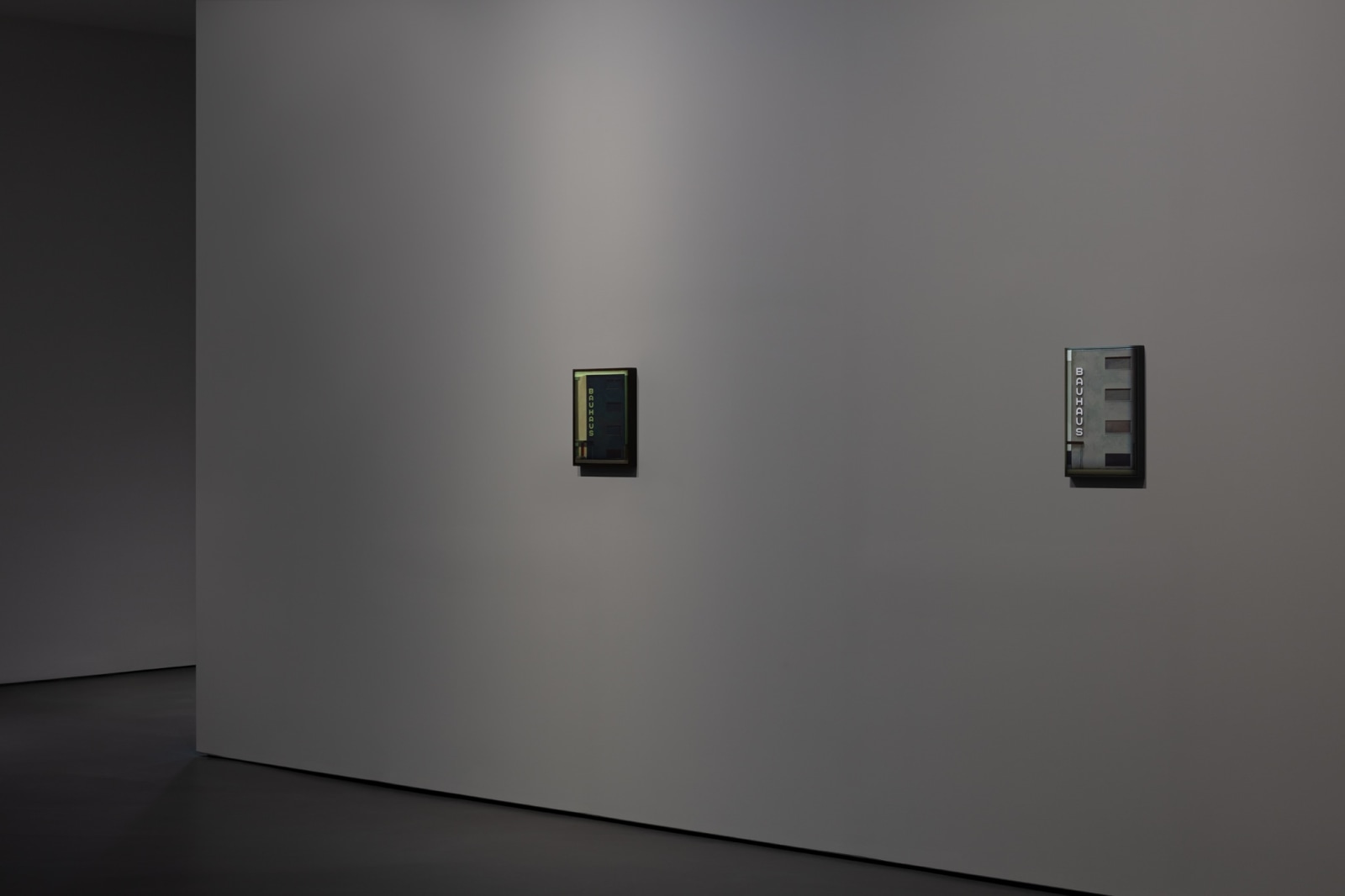Liu Ye Bauhaus No. 4, 2018
Acrylic on canvas
35,5 x 27,5 cm (14 x 10 7/8 in) (unframed)
37,6 x 29,7 x 4,2 cm (14 5/8 x 11 3/8 x 1 5/8 in) (framed)
37,6 x 29,7 x 4,2 cm (14 5/8 x 11 3/8 x 1 5/8 in) (framed)
The work belongs to the series of paintings depicting the Bauhaus building in Dessau, Germany. The motif of the work is a fragment of its façade with the mounted lettering BAUHAUS, occupying almost the entire canvas.
The emphasized spatial perspective of the architecture and the greenish-grey color palette that Liu Ye used to render the building as well as the sky – the only visible element of environment – recalls the architectural themes of surrealists. At the same time, the closed framing of the chosen fragment and the empty monochrome planes of the façade create an almost abstract, minimal imagery.
Bauhaus’ reference has also appeared in Liu Ye’s book paintings works. For some of these, the artist has represented the catalogue of Bauhaus works. Liu Ye has also referred to other modernist figures, with the most notable example being Piet Mondrian’s works appearing in next to the artist's comic-like characters. As a youth, Liu Ye was exposed to the work of European modernism in China. He later studied at the Berlin University of the Arts and held a residency at Rijksakademie in Amsterdam. The 6 years spent in these institutions formed Liu Ye's base of references of Western art history, which Liu Ye pairs with his knowledge of Chinese tradition and painting.
The emphasized spatial perspective of the architecture and the greenish-grey color palette that Liu Ye used to render the building as well as the sky – the only visible element of environment – recalls the architectural themes of surrealists. At the same time, the closed framing of the chosen fragment and the empty monochrome planes of the façade create an almost abstract, minimal imagery.
Bauhaus’ reference has also appeared in Liu Ye’s book paintings works. For some of these, the artist has represented the catalogue of Bauhaus works. Liu Ye has also referred to other modernist figures, with the most notable example being Piet Mondrian’s works appearing in next to the artist's comic-like characters. As a youth, Liu Ye was exposed to the work of European modernism in China. He later studied at the Berlin University of the Arts and held a residency at Rijksakademie in Amsterdam. The 6 years spent in these institutions formed Liu Ye's base of references of Western art history, which Liu Ye pairs with his knowledge of Chinese tradition and painting.
Scroll


